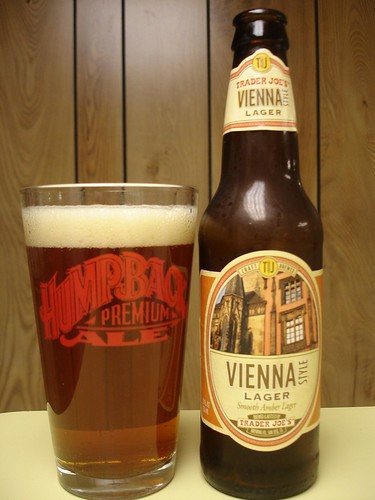My last two beers have turned out awesome. I made an American Ale which is exactly what you'd want from that style - crisp and refreshing with a prominent, but not overpowering, hop bite to it. Before that I made a Porter, which is the first one I've made since I've been doing five gallon boils. That one is also perfect for the style - sweet with a nice toasty and slightly bitter aroma.
Before those two, I was having some problems. I went all the way to Livermore to buy a kit to make an Irish Red. Not that I can't get an Irish Red kit at MoreFlavor; it's just that I wanted to check out that particular homebrew shop. I liked the place, The Good Brewer, as it was a pretty quaint little operation. Also, they had a better selection of soda extracts.
So, what went wrong? Well, I've been putting my fermenter/carboy in a mini fridge for the past several batches. I have a temperature-control guage to go along with it so I can keep it at a constant and appropriate temperature. I originally bought it so I could make lagers, but both attempts turned out to be failures. Anyway, it's complicated, but the bottom line is that I had the temperature set at about ten degrees less than what it should be. This resulted in the yeast not eating away the diacetyl, which results in a buttery flavor to the beer.
Now, diacetyl isn't necessarily bad. In some ale styles, you actually want a hint of it. Still, this was a wee bit too much even for an Irish Red. The good news though is that if I age this out a bit, this buttery flavor should get subdued. In fact, I had one today with some Chinese food, and I barely noticed it until I got to the bottom. Here's hoping that they'll get even better with a bit more aging. Worse comes to worse, they're good for my special chicken marinade, so they don't have to be a complete waste. (I also had this issue with a Blonde Ale that I made, but the buttery flavor wore out much faster, and they're nearly gone now.)
This is what I'm thinking went wrong with my lagers. There's something called a "diacetyl rest" that you need to do towards the end of fermentation, where the temperature is brought back up to about 65 degrees. Considering that I was about ten degrees too cold, it's no wonder that they didn't turn out right. I'm also guessing that this is why they all started gushing out of the bottle, as enough of the sugars didn't get converted into alcohol, and when I bottle-conditioned, there was a bit too much for the yeast to work with.
I'm also using a dry yeast for this, so I won't need to do a yeast starter - which is one less step for something to go wrong. It's made by Fermentis, and I've used plenty of their ale yeasts before. In fact, I prefer their English Ale yeast to White Labs, and I'm even starting to use their American Ale yeast over White Labs California Ale yeast. I like the way their yeasts result in a cleaner-looking beer. Also, the yeast tends to get more tightly packed at the bottom of the bottle, which looks nicer than when it's floating around in my glass.
So, I'm brewing a Vienna Lager tomorrow. I was hoping to have Oktoberfest-style beers for October, but that was a bust. Vienna Lagers are somewhat similar though, so maybe I can have them as a nice substitute. Maybe I might invite some friends over for bratwurst and Vienna Lagers if I'm actually feeling social.

No comments:
Post a Comment